A pandemic and other global breakdowns inspire a visual journal of diverse styles and influences.
“I think for me what is interesting about this series of work is the diversity of voices within myself.”
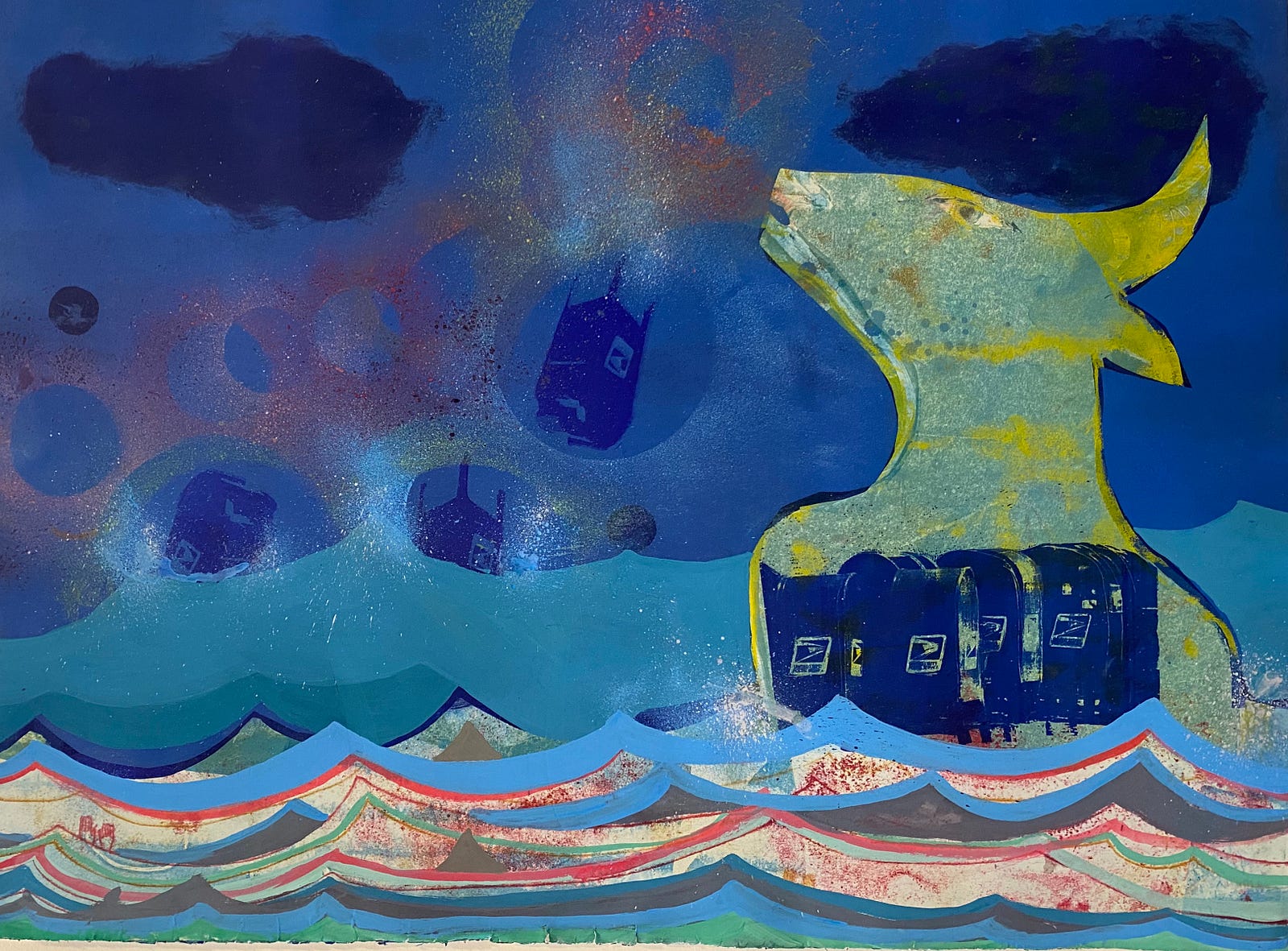
Editors’ Note: Alexandra (Ali) Blum is a California-based artist who draws on influences from around the world. When the quarantine was put in place, she started a series of paintings — which quickly became a series of mixed-media artworks — addressing the pandemic, politics, climate change, racism, protests, and other big topics of 2020.
On her website, Alexandra describes her goals as an artist: “I am interested in capturing the moment of seeing when something changes and the magic in the everyday. Hiraesh — a homesickness for a home to which you cannot return, a home that maybe never was; the nostalgia, the yearning, the grief for the lost places of your past is essential to my work. My interior world is of memories of childhood, books, songs, and stories. They steer my work.”
How does that clear sense of artistic mission evolve during a time of crisis? Alexandra’s portfolio shows it.
This feature also appears, in slightly different format, on Medium.
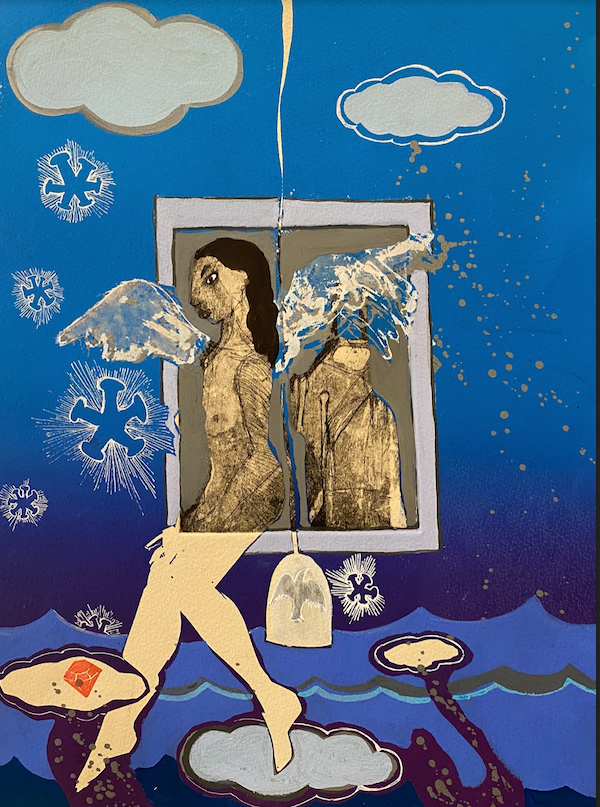
Our interview with Alexandra Blum
“Everything is coalescing in this series.”
Broad Street: Let’s start at the beginning. How did you find your way as an artist? Did you have any encouragement, or did you have to struggle all the way?
Alexandra: My father, Zevi Blum, and my stepfather, Salvatore Cammarata, are both artists. They probably were the forces that most profoundly shaped my work and self. My partner, Calixto Robles, is also an artist. My high school students inspire and renew me daily in the classroom or on zoom with their artwork, insights, and vitality.
So art making is in your blood and your life. How did the Covid-19 / Corona series, as you call it, come about?
I created images daily during this rising Pandemic beginning in March, when I started to work/teach my high school students from home. The work is a visual journal as I try to understand and feel everything that is happening around me and the interconnectedness of all systems — nature, health, death, endangered species, warming planet, dwindling resources, pollution, caring for each other.
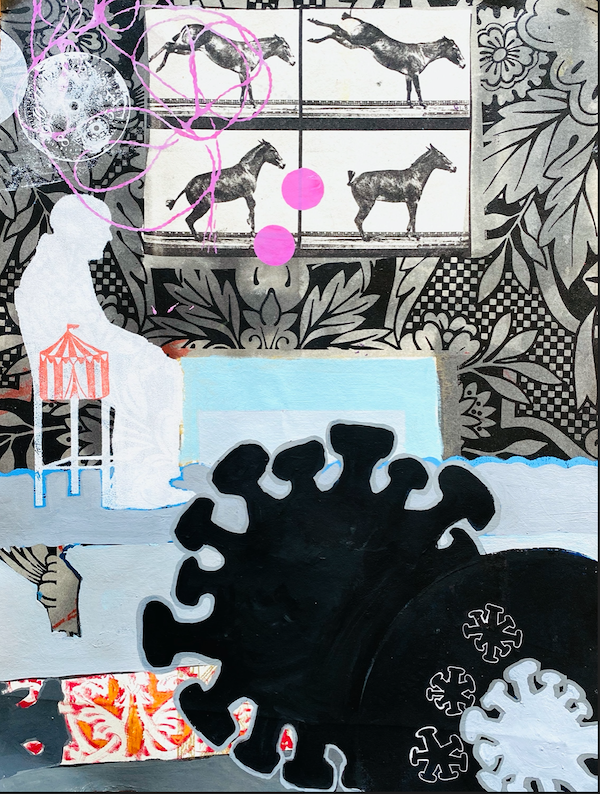
So it’s not just about the pandemic, it’s about everything that’s going on now.
My mind is so full and everything relentlessly continues.
I am thinking about human beings, protests, BLM, children, youth, and families at home and also people without homes/shelter, those titled “essential workers,” the droning of the news and endless misinformation, outbreaks in prisons, the deportation camps, child separations, nurses and doctors, teachers, and families who have lost people.
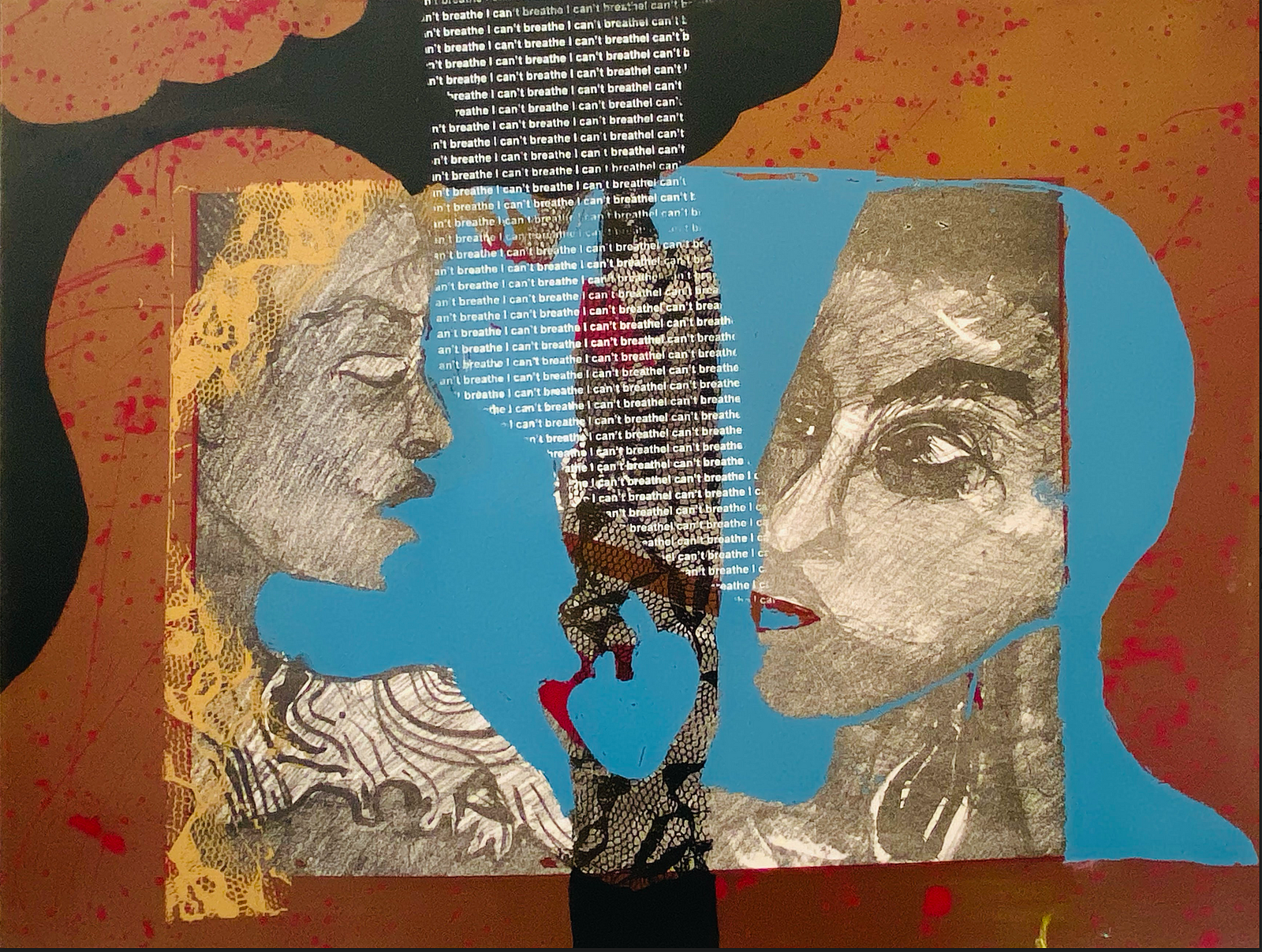
I think for me what is interesting about this series of work (Covid-19 / Corona) is the diversity of voices within myself. I go from stacked images reworked monoprints that I have torn down, to portraits of teachers and students, to animals, and summer fields, and beyond. I feel this shows all the emotions and cognitive dissonance of all that is happening. I want to reflect that with the many topics.
I realize this is atypical, as usually bodies of work are focused on being cohesive.
Everything is coalescing in this series.
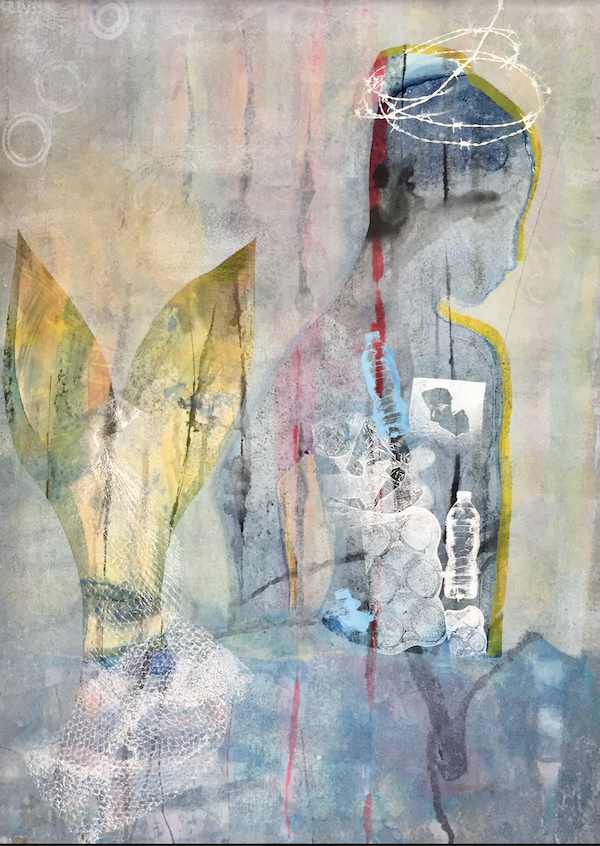
What would you say to people who argue that art should be apolitical — that it should exist for its own sake and no other?
Politics are very important to me, as is making my images accessible. I want to communicate a moment and a feeling about what is happening now. I do not think illustrative or narrative work is necessarily “less artistic” than other forms of fine art.
Previously, I was doing a lot of work focusing on family separations, climate change, and endangered species.
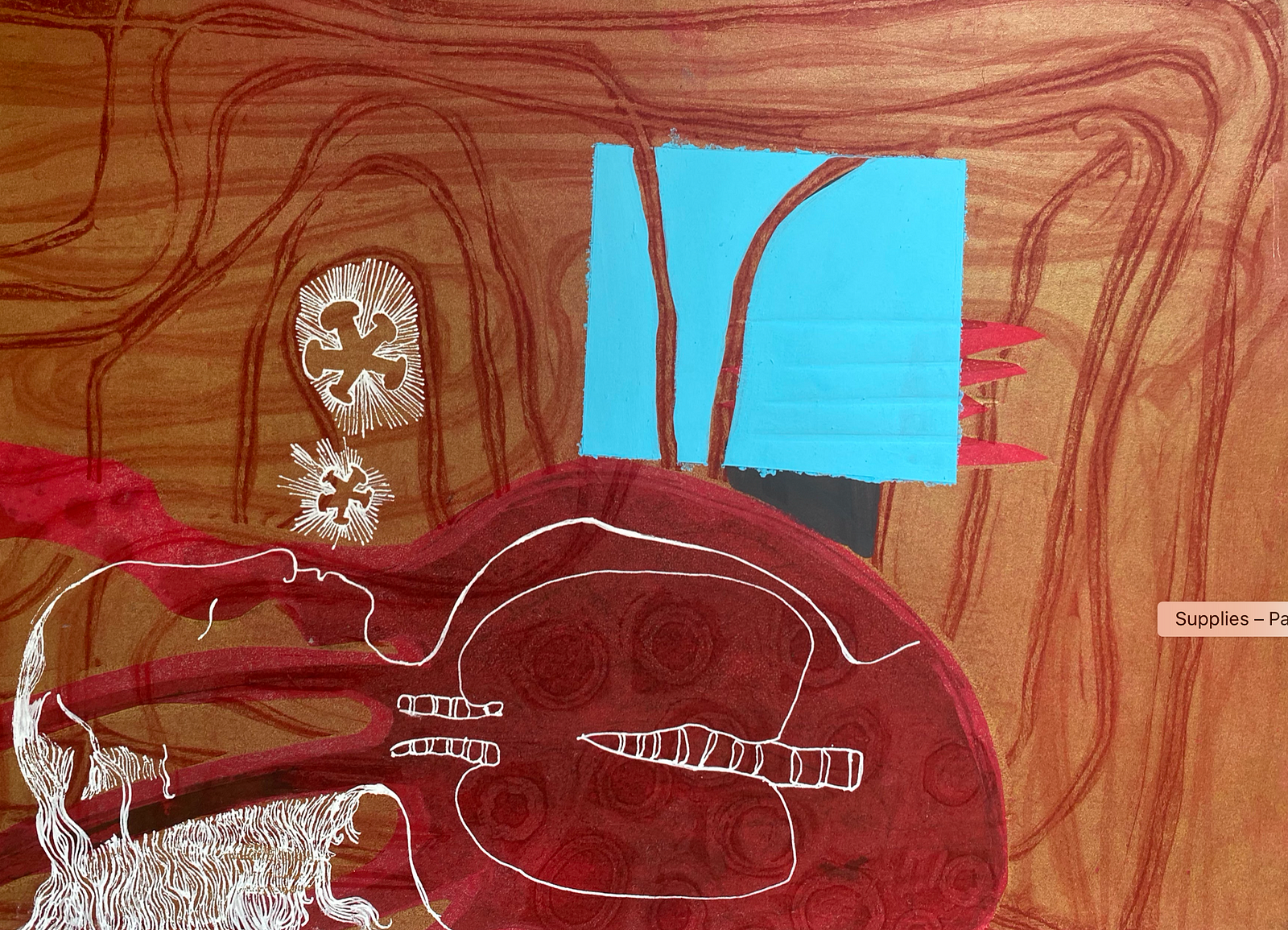
So this has been a very productive time for you. That’s a good thing that has come out of a dark era.
Oddly, I have not had this much time to make artwork in decades. So yes, that’s good.
Also there is the joy and gratitude in the beauty of daily life, my family, the cats running down the hall, seeing my daughter turn and smile. I feel greater appreciation.
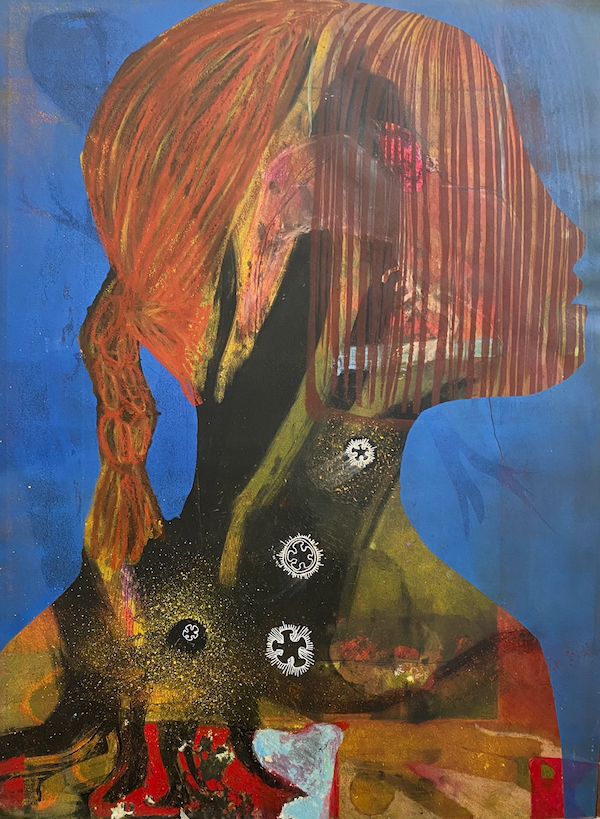
What technique are you using to make these pieces? Is it different in any way from how you usually create?
These works started as paintings and monoprint and then quickly became mixed media. I started tearing many of my 22″ x 30″ monoprints into quarters and journaling on them with gouache, drawing, collage, screen print, stamping — wherever the starting image, emotion, or news took my mind.
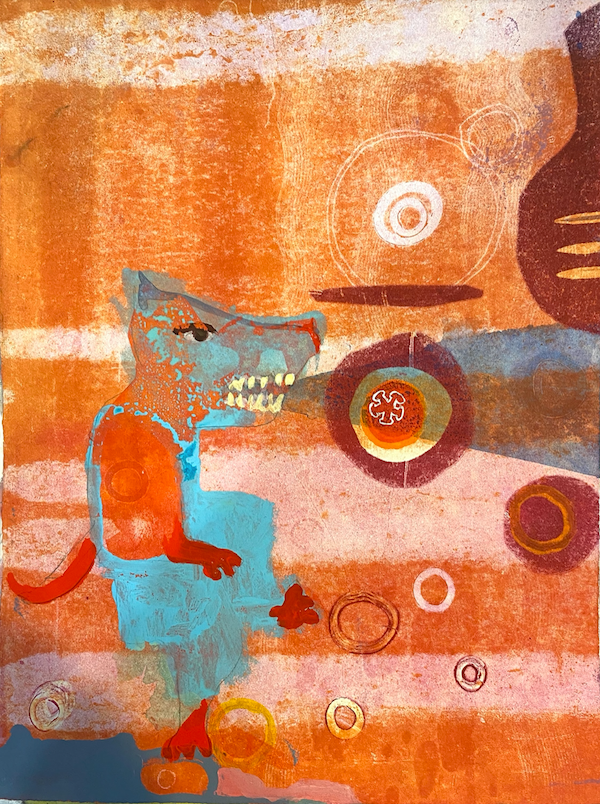
Your work has a strong sense of tradition. For example, I see references to Klimt in some of the flattened visual fields and use of color and geometric shapes. Those shapes also seem influenced by First Nation artwork — Northwest Coast totem figures, Coyote from Southwestern art (perhaps through your family), Hopi kachina dolls, and more. How do these diverse references come together in one artist?
I include many layered influences in my work. I feel my Jewish roots show through color, with visual references to Chagall, humor in titles, and an arch of structures, as seen in my father’s work as well as Latin and First Nation Peoples’.
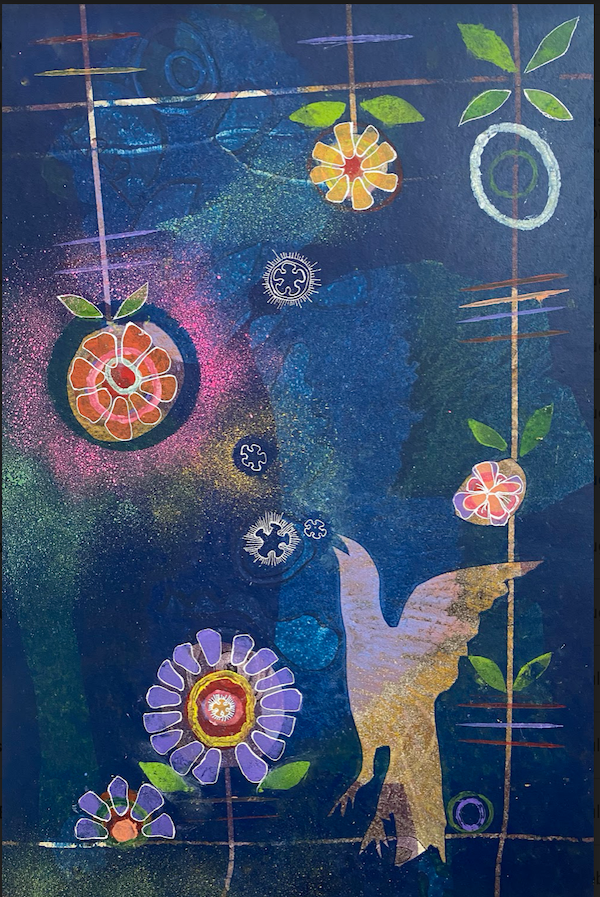
I think perhaps the LatinX influence comes from Calixto Robles, who is Oaxacan. We have been together twenty-plus years and usually go to Oaxaca every year with our twelve-year-old daughter, Cecile Altagracia Robles-Blum.
I am also inspired by Huichol art and the narratives within the images.
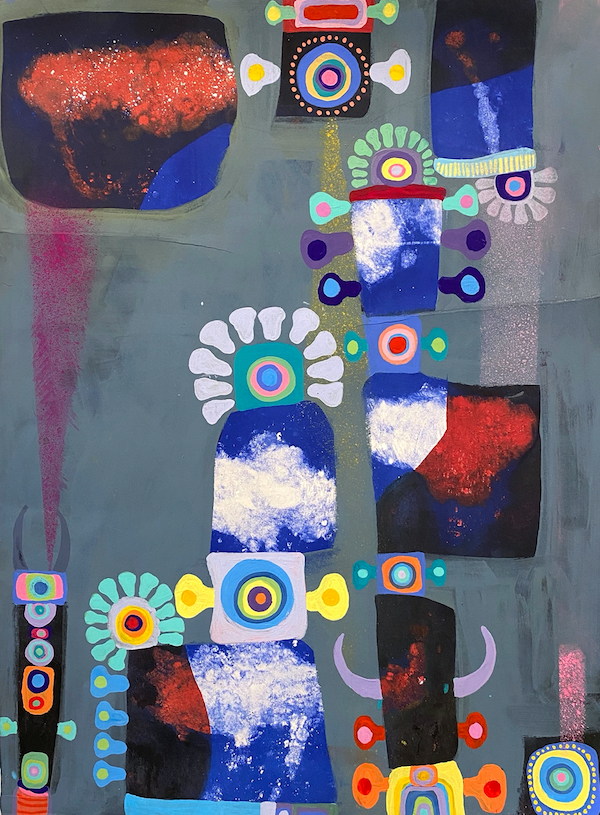
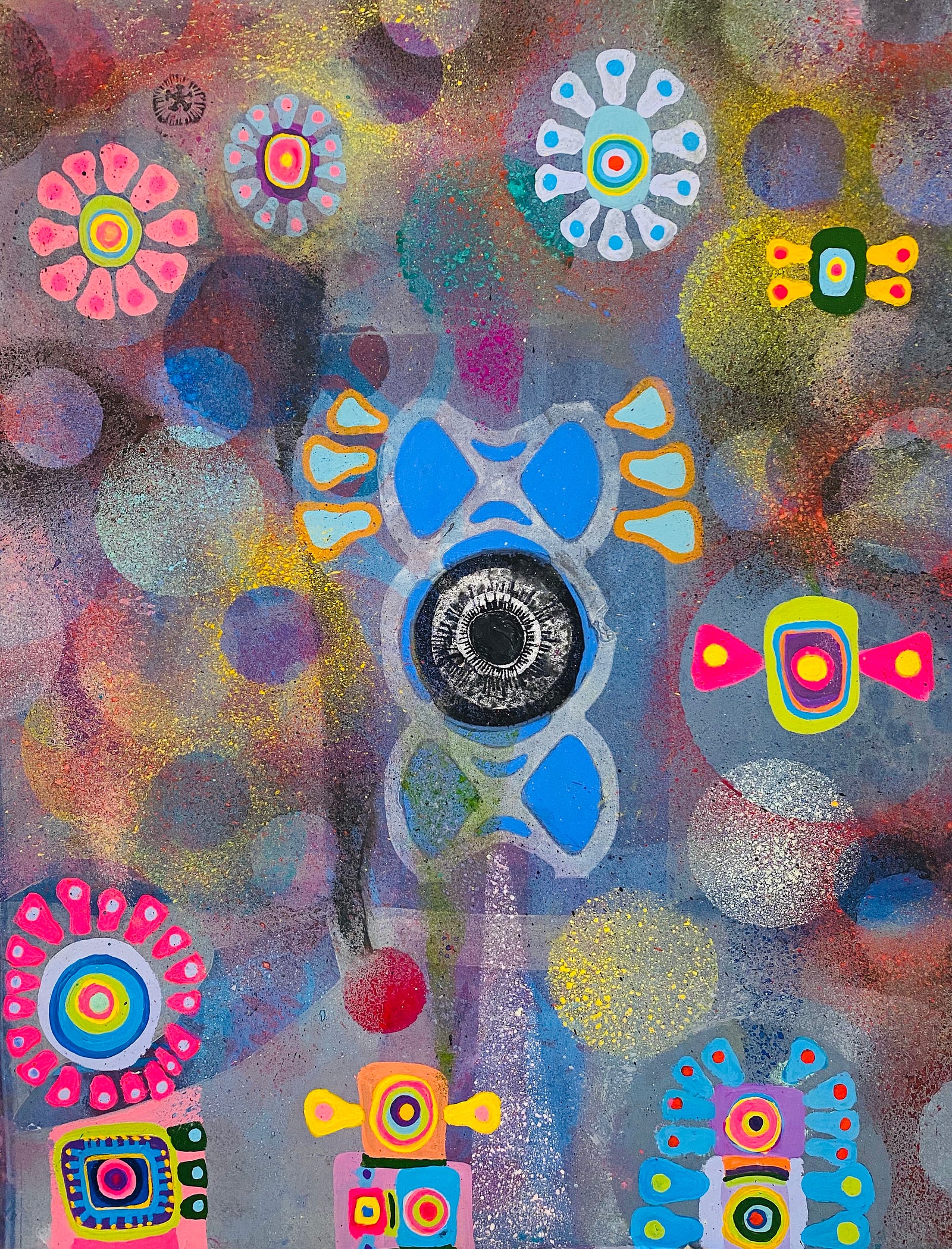
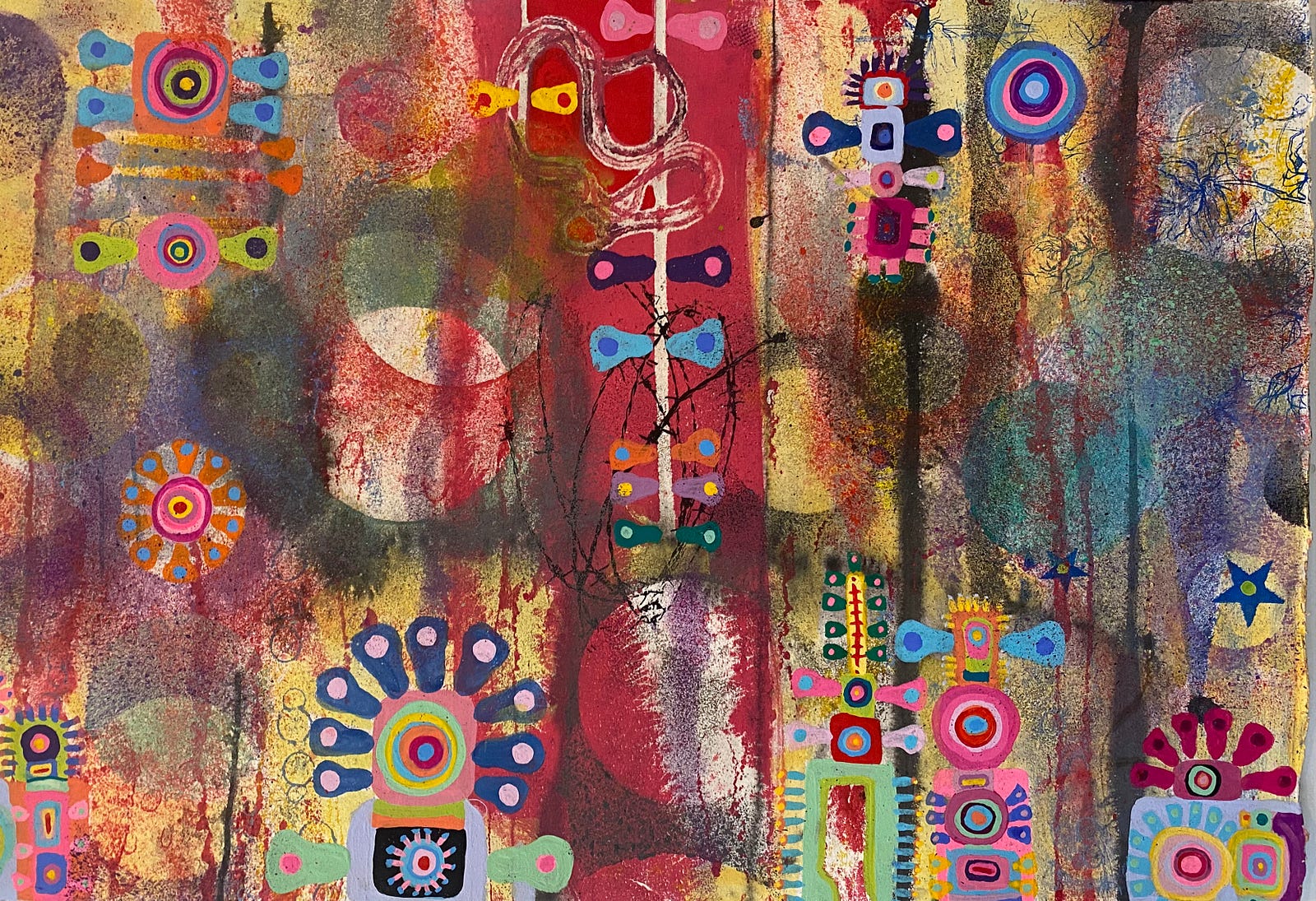
That’s the technique that first caught our eye at Broad Street.
I think that the stacking images are really influenced by Miro’s series “Constellations,” which I saw in a show and was totally mesmerized by in high school.
Folktales and fairy tales have always been important to me — especially when including animals such as the Fox (Coyote — also see “No Mask for Me,” above).
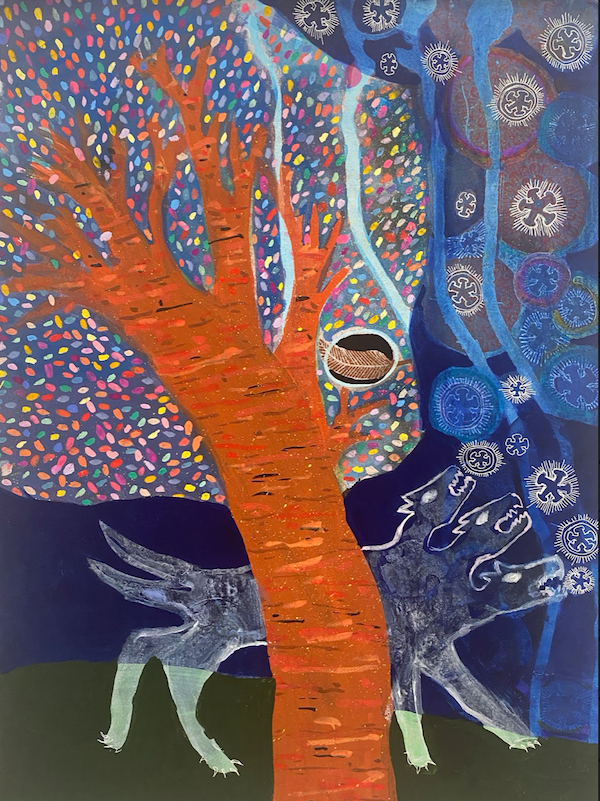
I think of the stories and illustrations of William Steig, the cartoonist George Booth, Maurice Sendak, as well as the early-edition Oz books with color plates, and The Wise Men Of Chelm.
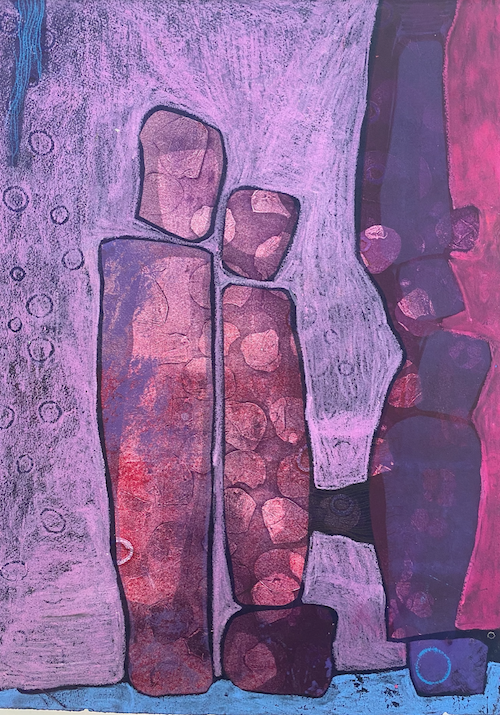
So a variety of influences — coalescing maybe not so much in one particular style as one diverse portfolio full of jewels.
Alexandra, thank you so much for sharing your work with us!
************************************************************************
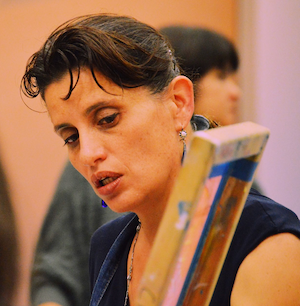
Alexandra Blum has lived in San Francisco for over twenty years. She is a member if the California Printmaking Society and has had residencies at Curtiduria Print shop in Oaxaca, Mexico, and the De Young Museum in San Francisco. She teaches at Drew School.
Selected solo and group shows include Cornell University’s Hartell Gallery, the Museo de la Filatelia de Oaxaca, and numerous venues around San Francisco: The Mission Cultural Center, San Francisco Public Library, Marin Headlands Visitor Center, The San Francisco Jewish Library, Ruth’s Table, The Jewish Community Center, The Legion of Honor, and the de Young Museum. She has held workshops and live art demonstrations at the SFMOMA, De Young Friday Night Events, The Academy of Sciences, Asian Art Museum intern program, and The Jewish Museum.
Photo by Kristen Skalin.








